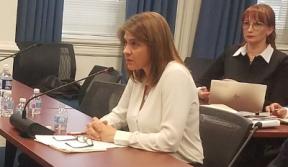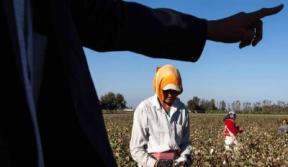1. Established Certifiers: Is Hershey going to use established third party certifiers or vendor assurance programs, like Armajaro’s SourceTrust program, which do little to address the problems of farmer income, cocoa sustainability, and child labor? If Hershey is going to use established third party certifiers, which one(s) are they going to use?
2. Clear Benchmarks: How much certified cocoa is Hershey currently sourcing? How much certified cocoa does Hershey plan to purchase every year to meet the 2020 goal?
Dedicated In-house
3. Certification Team: Does Hershey have a dedicated team in place to implement a certified sourcing plan so that the initiative does not hurt product taste, bean quality, and processing schemes?
4. Funding for Certification Capacity Building: How much is Hershey going to invest in building certification capacity as it scales up? Hershey won’t be able to fulfill its goal by simply buying cocoa from a third party certifier because there simply isn’t enough certified cocoa to meet Hershey’s overall need. The company will need to make a massive upfront investment in building certification.
5. Transparency: Will Hershey report on the impacts and outcomes of cocoa certification volumes as well as the impacts and outcomes of their efforts in source communities? Currently, Hershey has not provided any data on the impact of its efforts in West Africa.
If Hershey does not publicly answer these questions in short order, consumers and advocates would be well advised to consider Hershey’s announcement as little more than a public relations stunt.
Even if Hershey’s recent pledge is sincere, the fight to bring an end to the exploitation of children and farmers in West Africa’s cocoa industry is far from over. Third party certification is not the panacea cocoa activists once hoped it might be. Although some certification schemes may help reestablish the broken chains of corporate responsibility and improve farmers’ livelihoods by increasing yields and income, it is also possible that certification will suffer a fate similar to “independent” auditing firms in the apparel industry; where prestigious certifications have had little to no positive impact on working conditions, factory safety, or oppressive poverty level wages.
Just last month, the most deadly fire in industrial history raged through a certified apparel factory in Pakistan, highlighting the deep problems with corporate-funded certifiers. If the chocolate companies adopt similar programs – lacking in full public transparency and legal accountability to the farmers, children and workers in the supply chains they certify – little will be accomplished to help impoverished farmers and protect vulnerable children. Already in 2011, Theo Chocolate, one of the fastest growing fair trade bean-to-bar chocolate companies, clearly violated its certification obligations by carrying out an open anti-union campaign at its manufacturing facility in Seattle, while its third party certifier (IMO Group) refused to address Theo’s violations of international labor standards.
Furthermore, Hershey and the other giant chocolate companies have done little to nothing to address the fundamental power imbalance between West Africa’s cocoa farmers and the chocolate industry. Only a handful of companies control the entire cocoa market in West Africa, and the concentration of market power in recent years continues to place downward pressure on the prices farmers receive for cocoa. Until the chocolate industry is willing to address the fundamental structural inequalities in the cocoa supply chain, farmers will continue to face debilitating poverty and the worst forms of child labor will persist.
We are glad Hershey’s continues to move beyond charity programs and that Hershey’s president has accepted that Hershey must use its cocoa buying power responsibly. We will continue to push Hershey’s and the cocoa industry to stop exploiting cocoa farmers, workers and kids for profit. The fight to stop global companies from exploiting farming families and children is one that will continue across generations. As Judy Gearhart, Executive Director of the International Labor Rights Forum, wrote earlier in the year:
We are barely at a point now where chocolate companies are accepting accountability for their supply chains. They are asking themselves: “How much more do we need to pay to keep the kids out of our cocoa fields?” Unfortunately, few if any are asking themselves the right questions, such as, “How can we empower African farmers to demand a better price?” and, “How can we ensure workers throughout our supply chain are treated fairly?”
Adeline Lambert and Sean Rudolph work for the International Labor Rights Forum.


Comments
re: No More Child Labor Chocolate! Can Hershey Be Trusted?
So we want Hershey to use certified cocoa and then there's an article talking about certification as possibly being a waste of money?! How much monetary interest does ILRF receive from Fair Trade?
re: No More Child Labor Chocolate! Can Hershey Be Trusted?
Dear Concerned:
We want Hershey to use certified cocoa, but to make sure that they are using a certification that makes a real difference for cocoa farmers. We also want the certifications themselves to improve toward higher standards.
We don't receive funding from Fair Trade.
re: No More Child Labor Chocolate! Can Hershey Be Trusted?
Yes, we have already heard a number of news about the child labor on Hersheys company.With this pledge from the management, we just pray that they will hold true to their promise, so that little by little child labor problem will be solved.